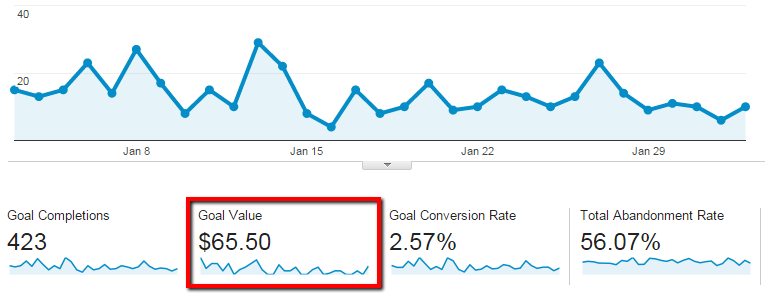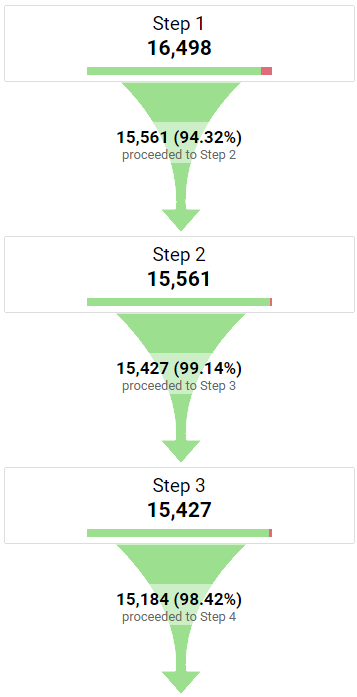Debunking Google Analytics Limitations: Discover What Information Goals Can not Track
In the realm of digital analytics, Google Analytics stands as a powerful tool that gives useful understandings right into site performance and customer habits. However, amidst its capacities, there exist restrictions that typically go unnoticed. Recognizing what Google Analytics can not track is vital for a thorough understanding of data analysis and decision-making processes. From the details of user interaction with vibrant material to the complexities of cross-device individual journeys, these restrictions lost light on areas that might continue to be obscured from traditional analytics perspectives. By deciphering these restrictions, a clearer photo emerges, enabling even more informed approaches and fine-tuned insights into user interaction and conversions.

Customer Interaction With Dynamic Content
Individual interaction with vibrant material plays an essential duty in recognizing customer behavior on websites and enhancing the total user experience. Dynamic content refers to aspects on a website that can change without the requirement for a complete web page reload. This consists of interactive components such as pop-ups, sliders, forms, and videos that react to customer actions in real-time. By tracking individual communications with vibrant content, web site owners can acquire useful understandings into individual interaction, preferences, and behaviors.
Google Analytics supplies various devices to track individual interactions with vibrant content, such as occasion tracking and virtual pageviews. Occasion monitoring allows you to check specific customer activities, like clicking a button or enjoying a video clip, giving data on exactly how users interact with dynamic components.
Cross-Device User Journeys
How can modern-day analytics devices track the complex courses users take across several gadgets in their on the internet trips? Cross-device customer journeys provide a significant obstacle for tracking and analyzing user habits precisely. As customers communicate with sites or applications using numerous devices such as mobile phones, desktop computers, and tablets, it becomes important to comprehend just how they move between these platforms to enhance individual experience effectively.
Google Analytics encounters restrictions in tracking cross-device user trips because of privacy problems and technological constraints - what data is google analytics goals unable to track. While it can provide insights into individual gadgets' communications, tracking a smooth user journey throughout numerous gadgets continues to be a difficulty. This restriction can lead to incomplete data and fragmented individual understandings, making it difficult for companies to create a unified sight of the client trip
To address this concern, services can use innovative analytics devices that offer cross-device monitoring capacities, allowing them to obtain an extra holistic understanding of customer actions. By leveraging these devices, services can bridge the void in tracking cross-device individual trips and enhance their electronic strategies for a smooth customer experience.
Offline Conversions and Attribution
As organizations navigate the obstacles of tracking cross-device individual journeys, another critical facet to take into consideration is the world of offline conversions and attribution in the world of information analytics. While Google Analytics provides useful understandings into on the internet individual habits, it falls short when it involves tracking conversions that take place offline. This constraint presents a substantial difficulty for organizations that have both online and offline sales channels.
Offline conversions, such as acquisitions made in physical shops or with phone call facilities, are essential additional hints to understanding the full client journey. Without the capacity to associate these offline conversions to particular online communications, companies might have a hard time to properly gauge the effect of their digital advertising initiatives.
To address this void, businesses can explore different solutions such as incorporating CRM systems with on the internet analytics devices or utilizing one-of-a-kind coupon codes that can be mapped back to on-line campaigns. By bridging the space in between online and offline data, services can acquire a much more comprehensive understanding of their customers' habits and boost their overall advertising approaches.
Individual User Identification
In the realm of data analytics, the capability to precisely recognize specific customers across different on the internet touchpoints is a vital difficulty for services looking for to personalize and optimize their marketing techniques. While Google Analytics offers important insights right into customer actions and communications, it drops brief in making it possible for the recognition of particular people because of privacy issues and technological limitations. Google Analytics makes use of one-of-a-kind identifiers such as cookies to track user sessions and habits, but these do not equate to determining individual customers in a personal feeling.

Data From Secure Pages
Regardless of the boosting prevalence of safe and secure web pages on internet sites, obtaining data from these encrypted resources provides an unique difficulty for digital analytics platforms like Google Analytics. Protect pages, suggested by HTTPS in the link, encrypt information exchanged between the individual's browser and the internet site's server to make certain privacy and protection. While this file encryption is essential for securing delicate information, it likewise poses constraints for tracking user habits and celebration analytics data.
Google Analytics faces barriers in collecting in-depth details from secure pages because of the encryption procedures in area. Consequently, certain data factors such as reference sources, keyword searches, and even some customer interactions might not be totally recorded when users access a site with a secure connection. This restriction can influence the precision and efficiency of the information evaluation, resulting in voids in comprehending individual habits and choices on safe web pages.
To browse this obstacle, electronic experts might require to explore different tracking methods or utilize various other tools specifically designed to collect understandings from safe web pages. By adjusting methods to fit these restrictions, services can still acquire beneficial analytics despite the restraints offered by encrypted connections.
Final Thought
In final thought, Google Analytics has constraints in tracking customer communication with dynamic content, cross-device individual trips, offline conversions, individual user identification, and data from protected pages. These constraints hinder a detailed understanding of individual actions and may lead to spaces in data analysis. In spite of its important understandings, Google Analytics may not offer a full photo of individual engagement across different touchpoints. It is vital for organizations to be knowledgeable about these restrictions and consider auxiliary tools for a more alternative sight of their data.
User communication with vibrant web content plays a vital role in recognizing customer habits on web sites and enhancing the total customer experience. By tracking customer Check Out Your URL communications with vibrant content, website owners can obtain valuable insights right into user engagement, preferences, and actions.
Google Analytics makes use of distinct identifiers such as cookies to track customer sessions and actions, however these do not correspond to identifying individual users in an individual sense.
As a result, certain data points such as reference sources, keyword searches, and even some customer communications may not be completely captured when individuals access a website through a secure link.In conclusion, Google Analytics has restrictions in tracking individual communication with vibrant web content, cross-device customer trips, offline conversions, individual user identification, and data from secure web pages.